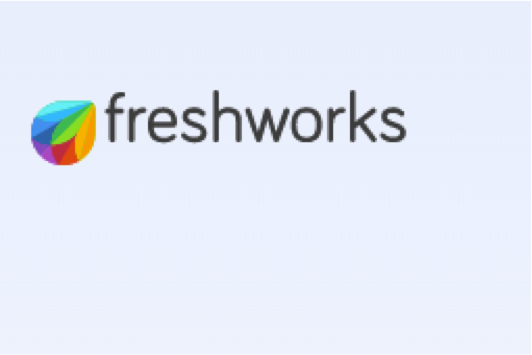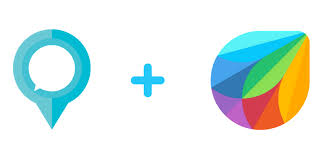
by twieberneit | Aug 30, 2017 | Analysis, Blog |
The News Freshworks on 29/08/2017 announced that it acquired Zarget, a conversion rate optimization software startup. With this being the ninth acquisition in about two years Freshworks is continuing to augment its development by adding missing functionality from outside while adding talent to the teams. Zarget’s software is helping marketers measuring and understanding how users interact with their websites, which is important information when it comes to assessing reasons for users not becoming customers. For Freshworks this acquisition also marks a first step to close the functional gap that marketing still is for them. With Freshworks founder and CEO Girish Mathrubootham having been an angel investor into Zarget this is also a natural choice. An interesting piece of information comes as a quote by Girish: “ At Freshworks, our ambition is to emerge as the de facto cloud-based business software platform for businesses of all sizes”. The Bigger Picture There are a couple of interesting facets to this acquisition. Freshworks, by virtue of its rebranding from Freshdesk, has made a bold statement that they are not striving to cover customer service only. This, of course, was clear earlier when looking at their range of products and solutions but this naming implies an ambition. I have commented on this this earlier. While they are still concentrating on the wider CRM area with bot acquisitions, a recent release of Freshteam, a CRM for recruiters, there is a tendency to divert into different areas. This time it is about starting to close a fundamental gap in Freshworks’ CRM offerings: So far there has virtually been no marketing functionality. Looking specifically at marketing...

by twieberneit | Aug 24, 2017 | Blog |
A short while ago Craig Rentzke from Helpshift pointed me to a particular episode of CXOTalk, featuring Kevin Henrikson of Microsoft and professor Anindya Ghose from NYU. Henrikson is responsible for Microsoft’s Outlook for Mobile, a personal information manager (PIM) app, whereas prof. Ghose comes more from a B2C angle, with B2C being more concerned with convenience. This interesting episode deals with the future of mobile computing and given that, apparently about how mobile apps will (have to) look like and what it is that vendors should do and what they should not do with the apps. The Now Naturally, the discussion immediately zeroed in on two topics the purpose of the app and data The purpose of the app mainly determines two things, which are first the way that users are presented with information and are engaging with the app and second the data that gets collected and used in order to (positively) influence the user experience while considering their privacy. The data that gets collected needs to be used to provide the users with timely and relevant information, which does not only benefit the vendor but also, and chiefly, the user. That the data collection ‘behaviors’ of especially B2C apps are not hitting that objective is probably the industry’s worst kept secret. The apps collect more than necessary and use it for a very wide range of purposes, mostly wider than the users are aware of. They basically strip the user of their personal data. This realization was also what led a friend of mine and me found Epikonic, with the clear intention of giving users a...

by twieberneit | Jul 28, 2017 | Blog |
For a while now I am contemplating about why companies choose one custserv solution over another. After all the market is pretty crowded. Vendors have a hard time to differentiate themselves. Just looking at G2Crowd one finds 88 Help Desk Solutions. Larger organizations are likely to be influenced by Gartner’s Magic Quadrant on Customer Engagement Centers or the Forrester Wave on Customer Service Solutions. Smaller organizations are probably looking more at the new breed of peer-to-peer review sites, like the aforementioned G2Crowd or GetApp, TrustRadius, Capterra and others. Many companies conduct research and establish an RFP process to determine the best fit; some see a bottom-up approach from team level to corporation. A kind of ‘shadow IT’ emerges to solve a team’s particular problem. This solution over time could get corporate blessing and may even become the main solution. A clear and reliable roadmap is mandatory for all vendors, so no difference here. Same for share of mind – this has become table stakes. But what is it that makes one vendor win over another? Are there patterns? To get more insight I asked some smart people who stay unnamed here – but you know who you are! So What Are Contributing Factors? The good news is that there seem to be only a few factors. Based on the discussions I can roughly group them into six categories. Here they are, in no particular order: A particular feature is needed or desired Suite- vs. Best-of-Breed thinking Size of the customer organization Relationship building Referrals Departmental adoption Of course they are not mutually exclusive. Let me briefly dive into each...

by twieberneit | Jul 25, 2017 | Analysis, Blog |
A few days ago Freshworks announced the acquisition of startup Joe Hukum, making it its eighth acquisition. Joe Hukum builds a chatbot platform that enables companies to quickly build their own chatbots for sales-, service-, or marketing purposes. In contrast to the technologies built by Frilp (acquired October, 2015) and Chatimity (acquired October, 2016) that rely on NLP (Natural Language Processing, as opposed to Neuro-Linguistic Programming) technologies, these bots are built using a Decision Tree technology. In order to be able to provide more advanced speech recognition they can connect to services of the Stanford Natural Language Processing Group, wit.ai, or api.ai. The created bots can be connected to websites, apps, or Facebook. The press release got published on July 20, 2017, but you can read it right here, before moving on to My Take. Freshworks acquires chatbot platform startup, Joe Hukum Company enhances capabilities to help businesses build and deploy bots San Bruno, July 2017 — Freshworks, the leading provider of cloud-based business software, today announced the acquisition of Joe Hukum, a platform that enables businesses to build their own chatbots based on logical workflows. This acquisition marks Freshworks’ eighth in just under two years, as it further bolsters capabilities to strengthen its business software suite. Freshworks had earlier acquired Chatimity and Frilp, key acquisitions that are enhancing neuro-linguistic programming (NLP) based Artificial Intelligence capabilities, while Joe Hukum’s decision tree based frameworks complete key capabilities to launch chatbot-powered solutions. Joe Hukum was founded in July 2015 by Arihant Jain, Ajeet Kushwaha, and Rahul Agarwal, who were the founding team behind two of India’s most prominent...

by twieberneit | Jun 29, 2017 | Analysis, Blog |
Earlier in June I had the opportunity to talk to Barry Coleman, CTO of Agent.ai, an about 2-year-old company at the time of writing this. The company spun off of manage.com, a very different business that enable the delivery of in-app advertisements. In order to support this mission more and more, first internal, then external support capabilities were needed. At first they built chat functionality for internal and for support purposes. Then there was the question of how to efficiently provide 24/7 support. This resulted in giving birth to a bot structure that can help customer service agents in an assisting mode, called co-pilot mode, and an autonomous mode, called autopilot. And it gave birth to Agent.ai. Agent.ai’s mission is to enable “exceptional customer service for all”. While this mission is not particularly unique, their approach is. First, Agent.ai has built its customer service software around a machine-learning platform. Second, the company provides their solution without asking their clients for a huge upfront investment or the need to have of AI-proficient developers in house. Third, they wanted to avoid the pitfall of inflated expectations. With AI and machine learning being very hyped topics at the moment, this is a very valid concern. Going backwards through the objectives, Agent.ai opted for offering very specialized bots first. As there is no general AI yet, this is pretty straightforward. Specific, tightly framed topics are far easier to support with AI and exposed by bots than broader bodies of knowledge. For example, specializations include the handling of order inquiries or of support call closure surveys. The second objective was achieved by doing all...






